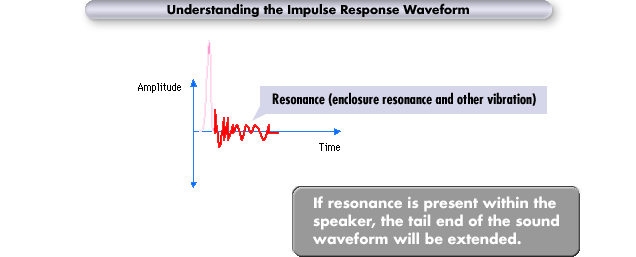|
|
| Seite 1 von 2 |

What is Time Domain Theory?
1. Time Domain and Frequency Domain

While conventional audio theory focuses primarily upon the frequency domain, as indicated by its name, time domain audio theory focuses upon the time domain.
The relationship between the time domain and the frequency domain is shown in the figure below. [Figure 1]
The original audio waveforms are depicted as time characteristics. By performing Fast Fourier Transforms on the time characteristics, both the amplitude-frequency characteristics (commonly known as F-characteristics), which contain sound pressure information, as well as the phase-frequency characteristics, which contain timing information, can be determined.
[Figure 1]

As is obvious from the above figure, the amplitude-frequency characteristics (F-characteristics), which are generally considered to be of greatest importance, merely describe one aspect of the overall sound quality. Therefore, the improvement of F-characteristics alone is, by itself, insufficient to permit the full reproduction of original sound quality, unless the corresponding phase-frequency characteristics are also included. This is one of the reasons why sound is not reproduced with the exact quality as the original, even with a complete replication of the F-characteristics.
Here, there are two possible approaches for reproducing the original sound quality (= original sound reproduction). One approach involves focusing on the frequency domain, to improve both the amplitude-frequency characteristics and the phase-frequency characteristics. The other approach involves focusing upon the time domain, in order to reproduce the original sound waveform itself.
With conventional speakers, the highest priority is usually placed on improving the amplitude-frequency characteristics, which does not result in any particular enhancement of the phase-frequency characteristics.
On the contrary, time domain theory aims to reproduce the original audio waveform, which contains the amplitude / phase frequency characteristics, through the speaker, without change. This theory is therefore considered to be an effective approach toward the reproduction of truly original sound.
2. The Pursuit of Time Characteristics.

The impulse response can be utilized as an indicator in attempts to improve the time characteristics. An impulse is a signal, which, in theory possesses the following characteristics: magnitude (amplitude) = infinite; time duration = infinitesimal; and an area equal to 1.
An impulse is composed of a mixture of all frequencies (amplitudes and phases). Therefore, if an impulse can be accurately reproduced, the time characteristics of the input signal will be output exactly, without change. In other words, time domain theory is utilized in order to provide an impulse response that is more closely matched to the actual impulse signal input.
[Figure 2]

[Figure 3]

As shown in [Figure 3], the resonant component (undesired harmonics), which extends the tail end of the audio waveform, indicates the presence of undesired harmonics that are unrelated to the original signal. The purpose behind the use of time domain theory is to bring the impulse response very close to the original impulse itself, eliminating any resonant components (undesired harmonics).
|
| Nächste Seite |
|
|






